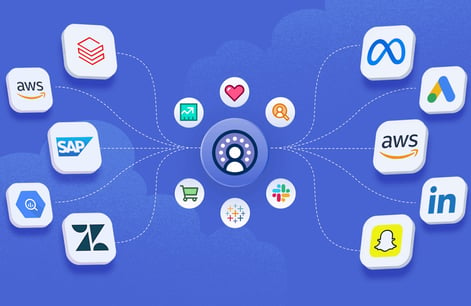Salesforce Data Cloud


Key Features and Benefits of Data Cloud
Data Unification: Connects data from any source, including Salesforce clouds, databases, and third-party systems. Uses connectors like MuleSoft, APIs, and direct integrations.
Identity Resolution: Uses AI-powered matching rules to resolve customer identities across different systems. Reduces duplicate records and creates a single customer view.
Segmentation: Enables marketers to create targeted segments based on unified customer data. Improves campaign personalization and effectiveness.
Activation: Activates data across channels, including email, mobile, web, and advertising. Delivers personalized experiences in real-time.
Einstein AI: Leverages Salesforce's AI capabilities to provide insights and recommendations. Identifies customer trends, predicts behavior, and optimizes engagement.
Real-Time Data: Processes data in real-time to provide up-to-date customer insights. Enables marketers to respond quickly to changing customer needs.
Data Governance and Compliance: Provides tools for data governance, privacy, and compliance. Helps organizations meet regulatory requirements like GDPR and CCPA.
Implementation and Use Cases
Implementation Steps:
Data Source Connection: Connect to various data sources using pre-built connectors or custom integrations.
Data Modeling: Define the data model and relationships between objects.
Identity Resolution Configuration: Set up matching rules to resolve customer identities.
Segmentation Creation: Define segments based on customer attributes and behaviors.
Activation Setup: Configure activation targets to send data to different channels.
Common Use Cases:
Personalized Marketing: Deliver personalized email campaigns, website experiences, and advertising. Example: Sending targeted product recommendations based on past purchases.
Customer 360 View: Create a single view of the customer across all interactions and touchpoints. Example: Customer service agents can see a customer's purchase history, support tickets, and marketing interactions in one place.
Improved Customer Service: Provide agents with real-time access to customer data for faster and more effective support. Example: Resolving customer issues more quickly by having a complete view of their account.
Predictive Analytics: Use AI to predict customer behavior and identify opportunities for engagement. Example: Predicting which customers are most likely to churn and proactively reaching out to them.
